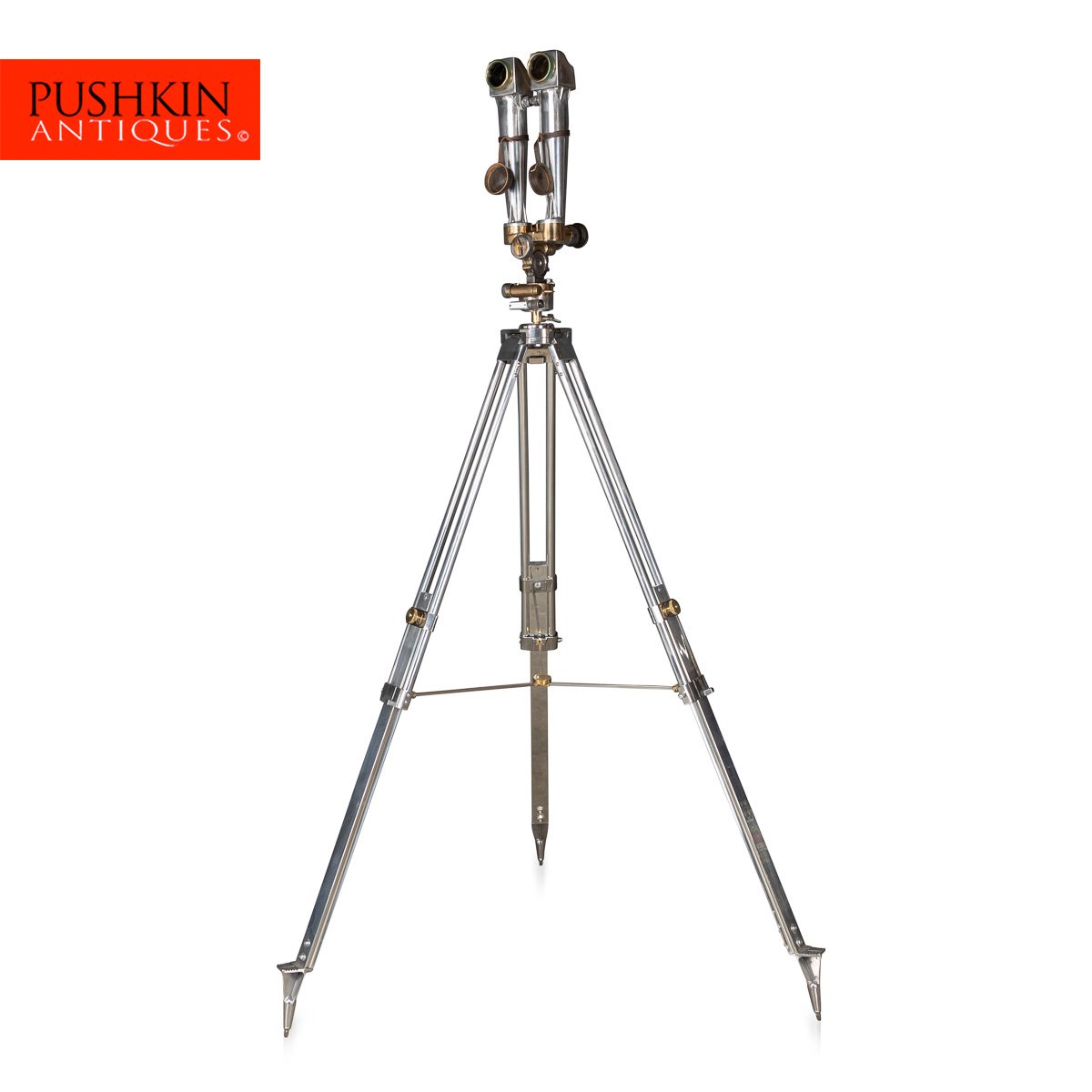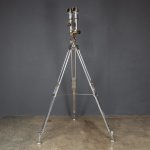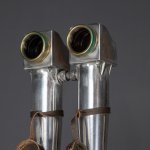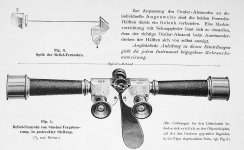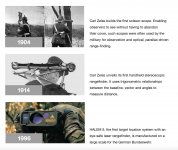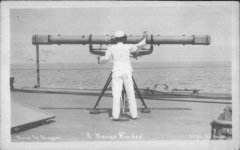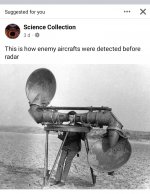henry link
Well-known member
I understand the allure and entertainment value of increased stereopsis in traditional Porros over inline roofs, but I've wondered whether it is Porros or roofs that come closer to matching the natural stereopsis we experience with no binocular. In other words do we see an exaggerated "3D" with Porros or diminished "3D" with roofs?
To test the effects of a wide baseline vs the eyes' normal separation I recently made a small periscope by combining two telescope star-diagonals. By placing the periscope horizontally in front of one eye I was able to increase the apparent baseline between my eyes from about 60mm to about 140mm, the baseline of a large Porro.
Looking through this viewer gave me the stereopsis of a Porro, but without the added magnification or any of the other optical artifacts of a binocular view. Just like in a Porro binocular the view provided obviously more stereopsis at mid distances and out to around 150 meters, but at close distances inside around 10-15 meters things took an odd turn. Objects looked smaller and smaller through the periscope compared to the normal baseline view as the distance decreased until at 3 meters the size of objects appeared to be reduced by about 20-25%. At even closer distances objects seemed to become toys from a dollhouse. This is the same illusion of lower magnification at close distances in Porros compared to roofs that has has been often reported. The stereopsis at 1-2 meters was wildly distorted through the periscope, with a highly exaggerated longitudinal separation between apparently tiny objects. Clearly the brain is confused by spatial cues that seem to be coming from eyeballs on stalks.
Another effect I noticed is that an unnaturally shrunken object viewed through the periscope also appears to be sharper than the same object viewed normally. Obviously there is no real change in sharpness, but I suspect this is probably the origin of reports of increased sharpness in some Porros, even when their optical quality is nothing special.
We don't normally see the full effect of the up close funhouse spatial distortion in Porros because of another effect that results from the wide baseline. Through traditional Porros the overlap of the right and left fields is much poorer at close distances than through inline roofs (or reverse Porros), so only a very small area of stereopsis is actually seen in the cat's eye shape where the two fields overlap.
This reduced overlap causes another effect, which has long been my main objection to Porros for close in birding or insect watching. While it's impossible to center an object in both fields of any binocular at close distance, reverse Porros have the least off-set at short distances, then inline roofs. Traditional Porros have the largest off-set. Typically, if an object is centered in the right field of an 8-10x Porro at 2 meters the same object will appear near or at the edge of the left field. We usually unconsciously deal with this by simply "centering" the object 15-20º off-axis in both fields, thus compromising the the alignment of the eye's and the binocular's optical axes.
Even though I own many more Porros than roof prism binoculars, over the years I've come to dislike the increased stereopsis of Porros over roofs even though I wasn't sure which spacial presentation was more "accurate". The recent experiences with the periscope have finally offered some good evidence that it's the traditional Porros that have too much stereopsis for a natural view and the inline roofs that have about the right amount.
To test the effects of a wide baseline vs the eyes' normal separation I recently made a small periscope by combining two telescope star-diagonals. By placing the periscope horizontally in front of one eye I was able to increase the apparent baseline between my eyes from about 60mm to about 140mm, the baseline of a large Porro.
Looking through this viewer gave me the stereopsis of a Porro, but without the added magnification or any of the other optical artifacts of a binocular view. Just like in a Porro binocular the view provided obviously more stereopsis at mid distances and out to around 150 meters, but at close distances inside around 10-15 meters things took an odd turn. Objects looked smaller and smaller through the periscope compared to the normal baseline view as the distance decreased until at 3 meters the size of objects appeared to be reduced by about 20-25%. At even closer distances objects seemed to become toys from a dollhouse. This is the same illusion of lower magnification at close distances in Porros compared to roofs that has has been often reported. The stereopsis at 1-2 meters was wildly distorted through the periscope, with a highly exaggerated longitudinal separation between apparently tiny objects. Clearly the brain is confused by spatial cues that seem to be coming from eyeballs on stalks.
Another effect I noticed is that an unnaturally shrunken object viewed through the periscope also appears to be sharper than the same object viewed normally. Obviously there is no real change in sharpness, but I suspect this is probably the origin of reports of increased sharpness in some Porros, even when their optical quality is nothing special.
We don't normally see the full effect of the up close funhouse spatial distortion in Porros because of another effect that results from the wide baseline. Through traditional Porros the overlap of the right and left fields is much poorer at close distances than through inline roofs (or reverse Porros), so only a very small area of stereopsis is actually seen in the cat's eye shape where the two fields overlap.
This reduced overlap causes another effect, which has long been my main objection to Porros for close in birding or insect watching. While it's impossible to center an object in both fields of any binocular at close distance, reverse Porros have the least off-set at short distances, then inline roofs. Traditional Porros have the largest off-set. Typically, if an object is centered in the right field of an 8-10x Porro at 2 meters the same object will appear near or at the edge of the left field. We usually unconsciously deal with this by simply "centering" the object 15-20º off-axis in both fields, thus compromising the the alignment of the eye's and the binocular's optical axes.
Even though I own many more Porros than roof prism binoculars, over the years I've come to dislike the increased stereopsis of Porros over roofs even though I wasn't sure which spacial presentation was more "accurate". The recent experiences with the periscope have finally offered some good evidence that it's the traditional Porros that have too much stereopsis for a natural view and the inline roofs that have about the right amount.
Last edited:








